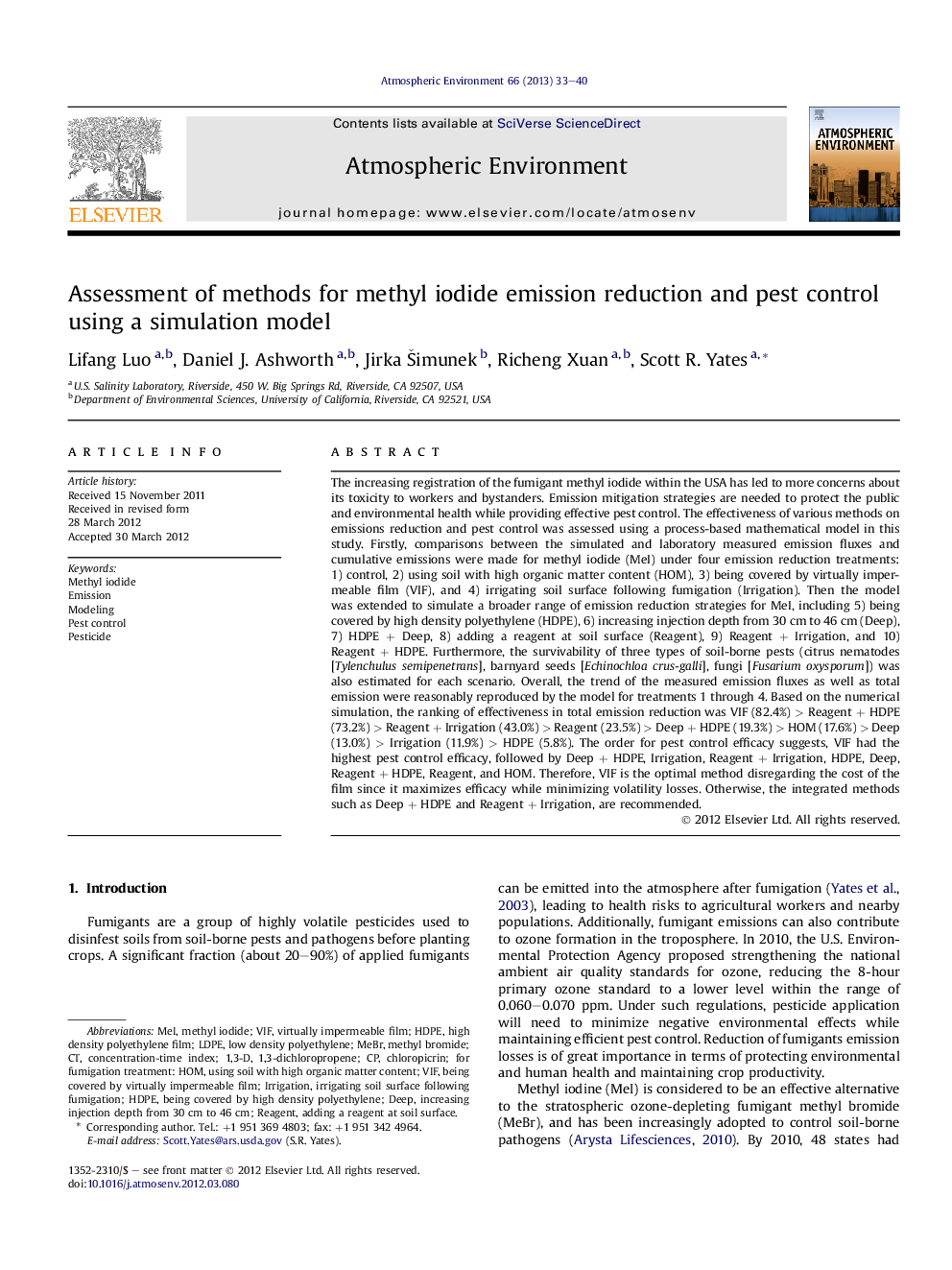| کد مقاله | کد نشریه | سال انتشار | مقاله انگلیسی | نسخه تمام متن |
|---|---|---|---|---|
| 4438399 | 1620405 | 2013 | 8 صفحه PDF | دانلود رایگان |

The increasing registration of the fumigant methyl iodide within the USA has led to more concerns about its toxicity to workers and bystanders. Emission mitigation strategies are needed to protect the public and environmental health while providing effective pest control. The effectiveness of various methods on emissions reduction and pest control was assessed using a process-based mathematical model in this study. Firstly, comparisons between the simulated and laboratory measured emission fluxes and cumulative emissions were made for methyl iodide (MeI) under four emission reduction treatments: 1) control, 2) using soil with high organic matter content (HOM), 3) being covered by virtually impermeable film (VIF), and 4) irrigating soil surface following fumigation (Irrigation). Then the model was extended to simulate a broader range of emission reduction strategies for MeI, including 5) being covered by high density polyethylene (HDPE), 6) increasing injection depth from 30 cm to 46 cm (Deep), 7) HDPE + Deep, 8) adding a reagent at soil surface (Reagent), 9) Reagent + Irrigation, and 10) Reagent + HDPE. Furthermore, the survivability of three types of soil-borne pests (citrus nematodes [Tylenchulus semipenetrans], barnyard seeds [Echinochloa crus-galli], fungi [Fusarium oxysporum]) was also estimated for each scenario. Overall, the trend of the measured emission fluxes as well as total emission were reasonably reproduced by the model for treatments 1 through 4. Based on the numerical simulation, the ranking of effectiveness in total emission reduction was VIF (82.4%) > Reagent + HDPE (73.2%) > Reagent + Irrigation (43.0%) > Reagent (23.5%) > Deep + HDPE (19.3%) > HOM (17.6%) > Deep (13.0%) > Irrigation (11.9%) > HDPE (5.8%). The order for pest control efficacy suggests, VIF had the highest pest control efficacy, followed by Deep + HDPE, Irrigation, Reagent + Irrigation, HDPE, Deep, Reagent + HDPE, Reagent, and HOM. Therefore, VIF is the optimal method disregarding the cost of the film since it maximizes efficacy while minimizing volatility losses. Otherwise, the integrated methods such as Deep + HDPE and Reagent + Irrigation, are recommended.
► The effects of various methods on fumigant emissions and pest control were assessed using a model.
► The models provide reasonably accurate emissions of methyl iodide.
► Being covered by VIF is the best method among nine treatments, followed by integrated methods.
Journal: Atmospheric Environment - Volume 66, February 2013, Pages 33–40